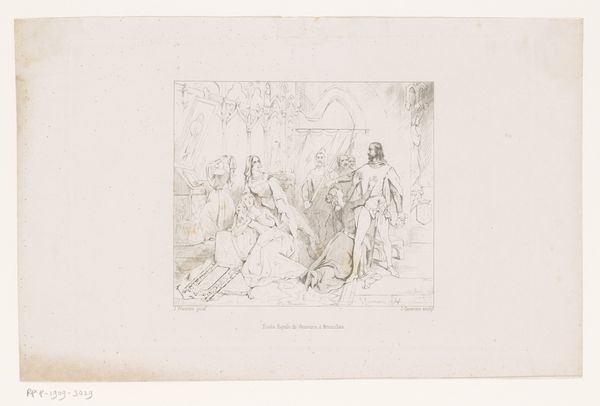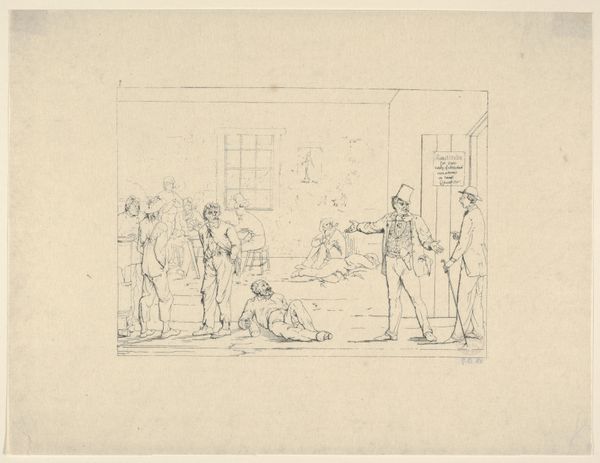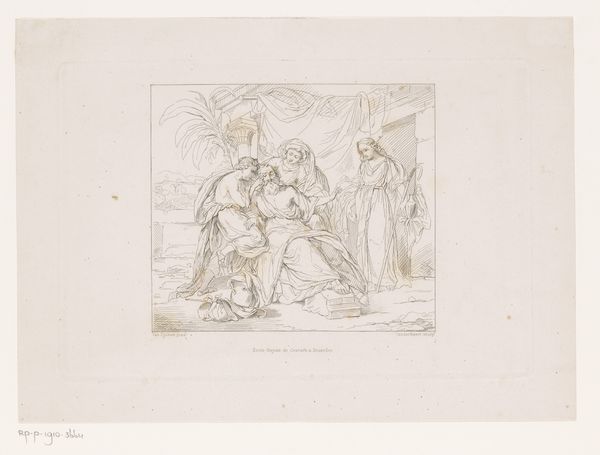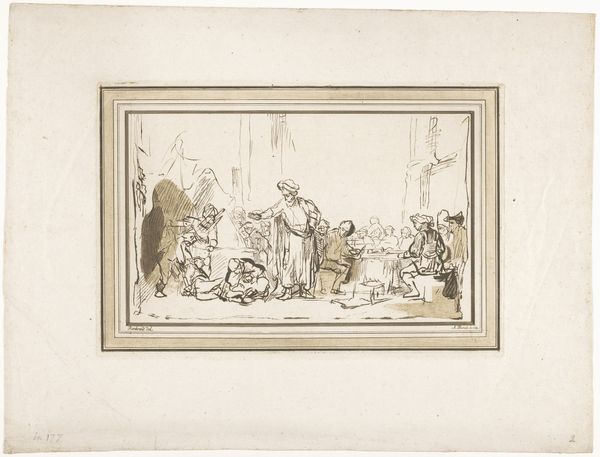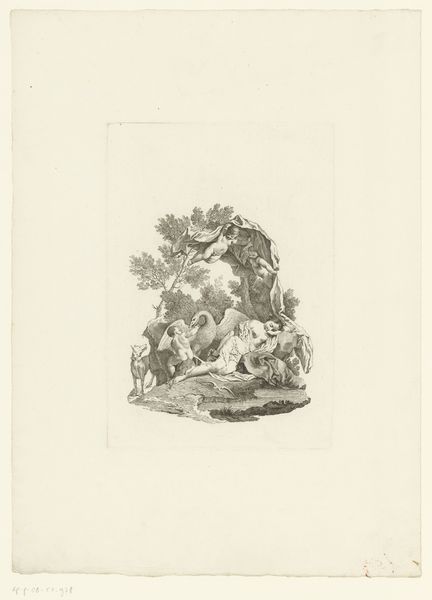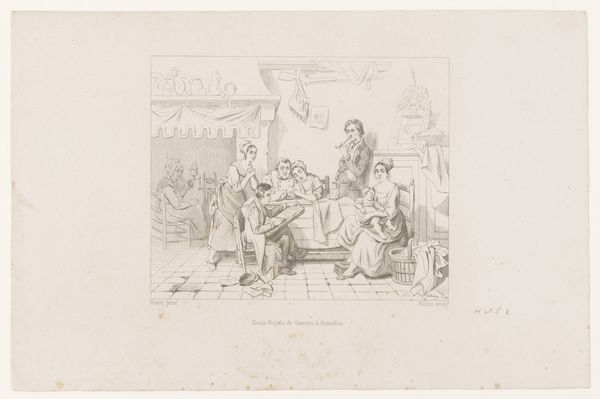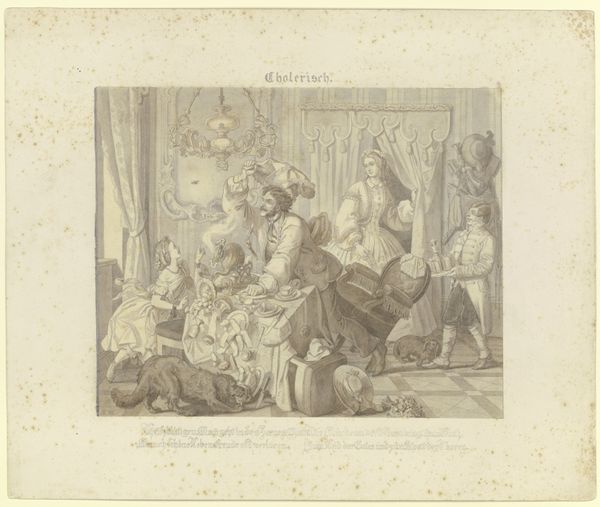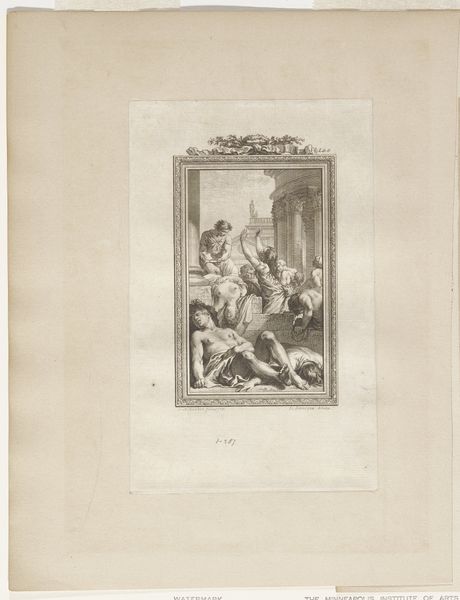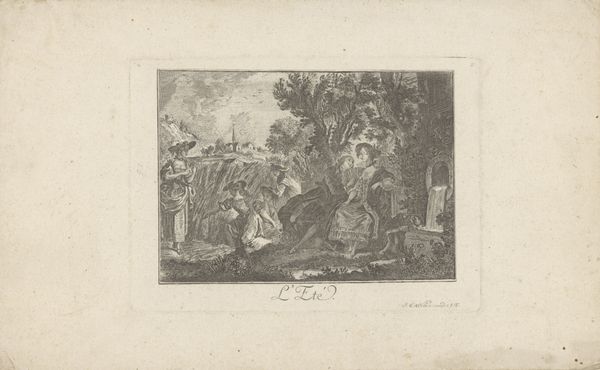
drawing, pencil
#
drawing
#
landscape
#
figuration
#
romanticism
#
pencil
#
genre-painting
Dimensions: height 226 mm, width 313 mm
Copyright: Rijks Museum: Open Domain
Curator: What a subtly evocative piece! This is a drawing entitled "Terugkeer van een visser bij zijn familie," or "Return of a Fisherman to his Family," dating from before 1840. It's rendered in pencil, though the artist remains anonymous. Editor: My initial impression is one of understated warmth. Despite the limited tonal range of the pencil, the artist has managed to create a real sense of light and domestic comfort. The composition feels balanced, anchored by the figures gathered around the table. Curator: It’s fascinating how the artist depicts labor and domesticity in this period. The fishing trade, the family relying on that trade, how gender roles are clearly delineated… It offers us insight into the economic and social fabric of that era. Notice the nets, baskets and tools scattered in the foreground. Editor: Absolutely. And if we consider the artist’s placement of figures and objects, the composition leads our eye from the darker tones of the fishing equipment on the left, up to the embrace of the fisherman and his family in the center, then it drifts towards the vanishing point in the hazy landscape. Semiotics would definitely consider the emotional impact the artist seems keen on establishing. Curator: Yes, that visual journey mirrors the fisherman's own journey home, both literally and figuratively. The work celebrates the inherent nobility of manual work by romanticizing what it means to return home. How different is our consideration of manual labor today, when it seems we don't see or value the lives of fishermen at all. Editor: Indeed! What also strikes me is the use of the pencil itself. It would be interesting to look closer at how it affects this artwork's visual aesthetic in its textures and varying lines. Its inherent material qualities are crucial to understanding the overall artistic intent here. It seems Romanticist in its appreciation of landscape, family structure, and an everyman narrative. Curator: And think about how these scenes were distributed, how these types of domestic scenes made it into private homes via reproductive technologies, such as engravings after the fact. Consider the cultural implications of the accessibility, circulation, and consumption of this kind of imagery. Editor: Such insights broaden our understanding, as you have mentioned. It is true—understanding Romanticism's view that art must represent not only the real but the ideal, certainly the sentimental here. Curator: Yes, from an art historical point of view it makes me curious as to where and with whom this piece has existed over time. A fascinating glimpse into a world undergoing seismic change. Editor: An artwork where form and structure can offer many narratives, depending on which critical approach we consider most relevant.
Comments
No comments
Be the first to comment and join the conversation on the ultimate creative platform.
